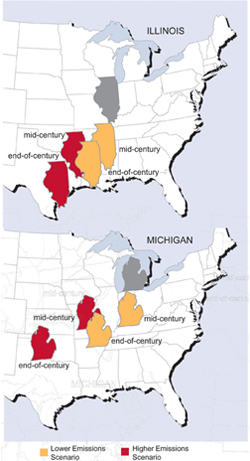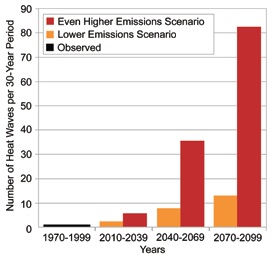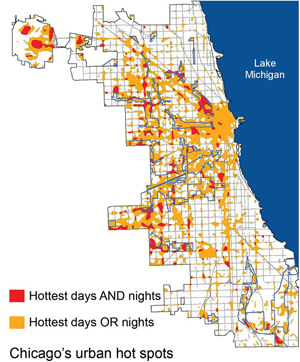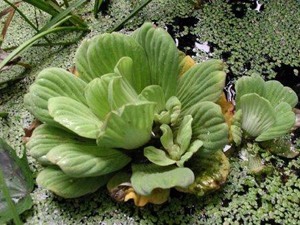Climate Change
Midwest Impacts & Adaptation
Midwest

On This Page
Key Points
- The Midwest will likely experience hotter summers with longer dry periods and milder, wetter winters.
- In Midwest urban areas, climate change will likely make it more difficult to maintain current summer air quality.
- Climate change will likely place additional stress on infrastructure and the economy, particularly on shipping routes on the Great Lakes.
- In the short-term, Midwest crop yields may benefit from less snow cover and a longer growing season.
Related Links
EPA:
- Climate Change and Water: Midwest
- EPA, Great Lakes
- EPA Region 5 (including the Midwest states of IL, IN, MI, MN, OH, and WI)
- EPA Region 7 (including the Midwest states of IA and MO)
-
EPA, The Great Lakes Restoration Initiative

-
EPA, The Great Lakes Restoration Initiative Action Plan (PDF)

- EPA Climate Change, Wildlife, and Wildlands Toolkit: Great Lakes and Upper Midwest
Other:
-
IPCC Working Group II: North America

- USGCRP Global Climate Change Impacts in the United States: Midwest
-
Union of Concerned Scientists Confronting Climate Change in the U.S. Midwest

-
Union of Concerned Scientists Great Lakes Communities and Ecosystems at Risk

- NOAA Great Lakes Environmental Research Laboratory
 View enlarged image
View enlarged image
Projected change in summer temperatures under different warming scenarios. Summers in Illinois and Michigan might feel like current summers in Texas or Oklahoma by the end of the century.
Source: USGCRP (2009)
The Midwest is home to roughly 66 million Americans and includes the cities of Chicago, Indianapolis, Detroit, Milwaukee, Kansas City, Cleveland, Minneapolis, and St. Paul, among others. Most of the region consists of flat prairie that is farmed for corn, soybean, and wheat, or is used for grazing livestock. Summers in the Midwest are hot and humid, and winters are cold, since the region is far from the temperature-moderating effect of the oceans. [1]

Number of 1995-like Chicago Heat Waves. Under the lower emissions scenarios, 1995-like heat waves are projected to occur approximately once every three years. Under the higher scenarios, heat waves are projected to occur on average, three times per year.
Source: USGCRP (2009) (PDF)
In the Midwest, average annual temperatures increased over the last several decades. Heat waves are becoming more frequent and cold periods are becoming rarer. Snow and ice are arriving later in the fall and starting to melt earlier in the spring. Heavy downpours now occur twice as frequently as they did a century ago. [1] These trends are likely to continue under future climate change: average summer temperatures are projected to increase by 3°F over the next few decades and could increase by over 10°F by the end of this century. This range would make summers in Illinois and Michigan feel like those in present-day Texas and Oklahoma, respectively. [1]
Impacts on Human Health
Climate change will likely affect the health of Americans living in the Midwest. For example, climate change could increase heat-related deaths, increase the risks of spreading certain diseases, and worsen air quality.
- In 1995, Chicago endured a heat wave from July 12th to July 16th that caused over 700 heat-related deaths. Similar heat waves could occur up to three times per year by 2100. If greenhouse gas emissions increase at a higher rate, the average annual number of heat-related deaths in Chicago is projected to quadruple by the middle of the century. [1] In general, heat waves are projected to increase in frequency, duration, and severity as climate changes. [1]
- Ticks and mosquitoes are already a nuisance in the Midwest, but will survive in greater numbers as winters become milder. This will increase the risks of spreading diseases such as Lyme disease and West Nile virus. [1]
- Some areas close to Chicago and St. Louis do not currently meet air quality standards for ground-level ozone, an air pollutant that can damage lung tissue when inhaled. Ozone forms in hot, sunny, and stagnant conditions. [2] More frequent and intense heat waves are likely to increase ozone formation. This will make it more challenging to meet air quality standards and will increase the risks of health effects in these areas. [1]
For more information on climate change impacts on human health, please visit the Human Health Impacts page.
Impacts on Water Resources
 View enlarged image
View enlarged image
Damage caused by the Great Flood of 1993 along the Mississippi and Missouri river systems. This photo shows the damage caused to Highway 54 just north of Jefferson City, Missouri. Although an individual flood event such as this cannot be linked specifically to climate change, climate change will increase the likelihood of flooding in the Midwest.
Source: USGS (1993)
Throughout the year, precipitation in the Midwest is likely to become more intense, likely leading to increased flood damage, strained drainage systems, and reduced summer water availability.
- Precipitation in the Midwest is likely to fall more frequently in heavy downpours, which will increase the likelihood of flooding, property damage, travel delays, and disruption in services. The last three decades have been the wettest in a century for the Midwest. In the first half of 2008, severe floods swept the region, causing fatalities, evacuations, and damage to roads and infrastructure. [3]
- More frequent heavy downpours will strain drainage and wastewater systems unless they are rebuilt during the next century. Chicago's combined water and sewer systems overflowed into Lake Michigan due to heavy rainfall an average of two and a half times each decade from 1960 to 1990. This level of heavy rainfall is projected to occur two to three times as often by 2100. [1]
- Between heavy rainfall events, there will likely be longer periods without precipitation. Increased evaporation during warmer summers could increase the likelihood of water shortages or drought in the Midwest. [1]
For more information on climate change impacts on water, please visit the Water Resources page.
Impacts on Agriculture, Forests, and other Ecosystems
In the short term, climate change could help or harm agriculture, forests, and other ecosystems in the Midwest. On one hand, where sufficient water and other nutrients are available, crops and forests may benefit from a longer growing season and increased levels of carbon dioxide. On the other hand, climate change may negatively impact the health of crops, trees, and animals in the region.
- Wetter conditions in the spring may make it difficult for farmers to plant their crops. [1]
- More frequent heat waves, floods, and droughts, as well as larger populations of harmful insects, will likely place additional stress on the region's agriculture. [1]
- Higher temperatures may stress livestock animals. This will likely make livestock production more costly during the summer as livestock productivity decreases and ventilation and cooling costs increase. [1]
- Climate change may threaten forests in the Midwest. Threats include more frequent droughts, wildfires, and larger populations of harmful insects such as gypsy moths.
- Climate change is likely to alter fish populations in the Midwest. Cold-water fish such as brook trout, lake trout, and whitefish are projected to decline. Cool-water fish such as muskie, smallmouth bass, and bluegill are projected to replace these declining populations. [1]
For more information on climate change impacts on ecosystems, please visit the Ecosystems Impacts page.
Climate Change Impacts on the Great Lakes
 View enlarged image
View enlarged image
Projected changes in the level of the Great lakes by end of the century.
Source: USGCRP (2009)
The Great Lakes are a key feature of Midwestern geography and society. The lakes contain 78% of North America's surface freshwater [4] and support transportation, agriculture, commerce, and recreation in the area. Each year, millions of tons of iron ore, coal, and grain are shipped over the lakes. In addition, fish are harvested from the Lakes, providing support to the local economy. One third of all registered boaters in the United States reside in the greater Great Lakes region, including Lake Ontario. [5]
Climate change is likely to upset these economic activities in the Great Lakes. For instance, in a warmer climate, evaporation from the lakes is projected to increase. Increased evaporation could cause water levels to drop by one to two feet by the end of the century. Although such a drop in water levels could benefit public beach access, it could adversely affect coastal ecosystems. Lower water levels would also make some key shipping channels too shallow for fully loaded ocean-going ships.
Warmer temperatures may, however, have a positive impact on shipping, as ice-free seasons on waterways lengthen. The net impact of these changes is likely to impose costs on the Midwest through increased shipping, maintenance, and repair costs, as well as lost recreation and tourism. [1] The Great Lakes Restoration Initiative, an interagency task force working to restore the Great Lakes ecosystem, is addressing climate change impacts and increasing the resiliency of the Lakes to future changes. [6]
To learn more about what the Midwest is doing to adapt to climate change impacts, please visit the adaptation section of the Midwest Impacts and Adaptation page.
References
[1] USGCRP (2009). Global Climate Change Impacts in the United States . Karl, T.R., J. M. Melillo, and T. C. Peterson (eds.). United States Global Change Research Program. Cambridge University Press, New York, NY, USA.
[2] NOAA (2008). 2008 Midwestern U.S. Floods . NOAA National Climatic Data Center. Accessed 2/24/2012. EPA (2011). The Green Book Nonattainment Areas for Criteria Pollutants. U.S. Environmental Protection Agency.
[3] EPA (2011). The Green Book Nonattainment Areas for Criteria Pollutants . U.S. Environmental Protection Agency.
[4] EPA (2011). Great Lakes: Basic Information . U.S. Environmental Protection Agency.
[5] NOAA (2004). About Our Great Lakes: Economy . National Oceanic and Atmospheric Administration.
[6] EPA (2010). Great Lakes Restoration Initiative Action Plan (PDF). U.S. Environmental Protection Agency. Accessed 6/10/2011.


